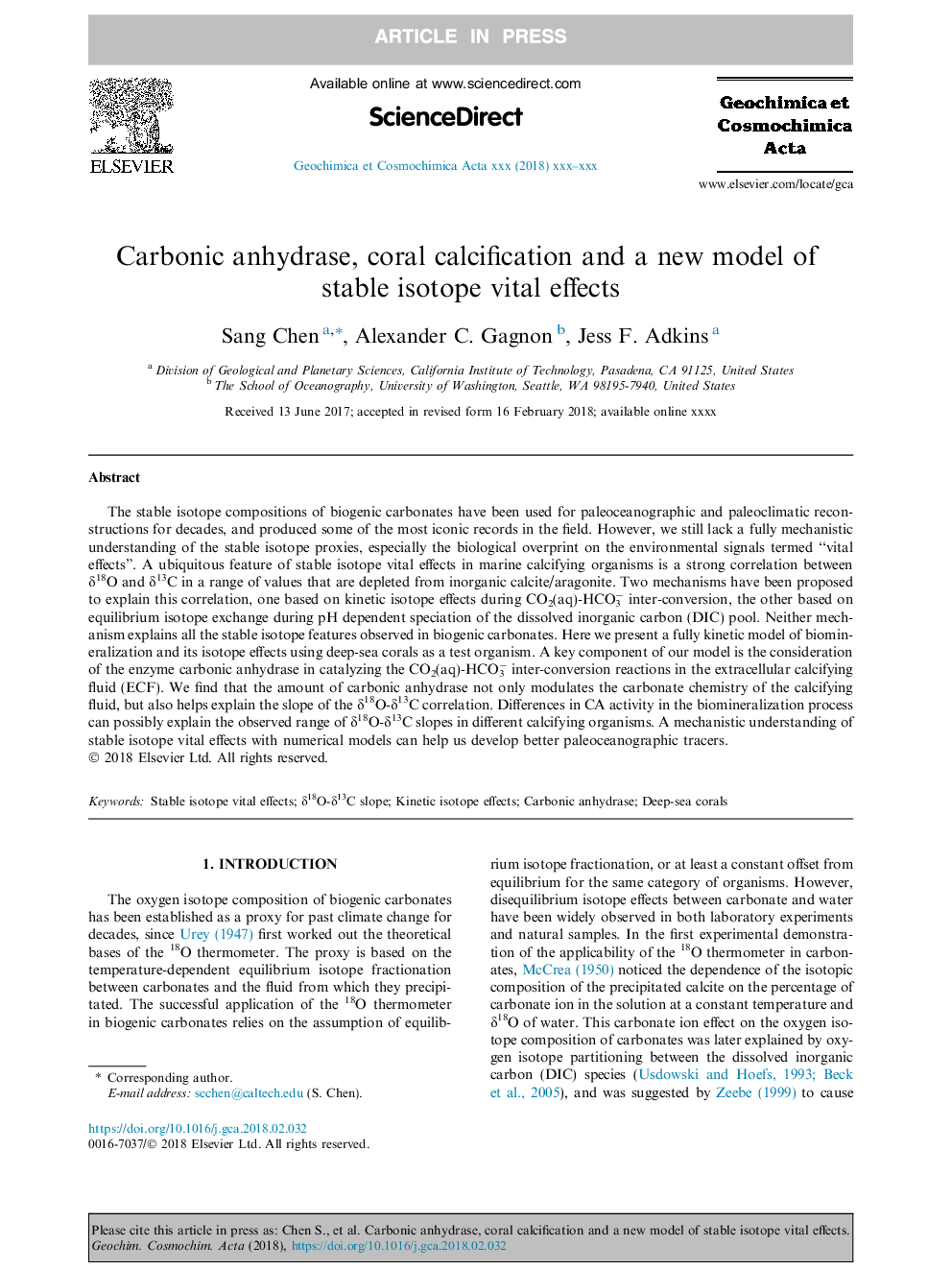| Article ID | Journal | Published Year | Pages | File Type |
|---|---|---|---|---|
| 8910652 | Geochimica et Cosmochimica Acta | 2018 | 19 Pages |
Abstract
The stable isotope compositions of biogenic carbonates have been used for paleoceanographic and paleoclimatic reconstructions for decades, and produced some of the most iconic records in the field. However, we still lack a fully mechanistic understanding of the stable isotope proxies, especially the biological overprint on the environmental signals termed “vital effects”. A ubiquitous feature of stable isotope vital effects in marine calcifying organisms is a strong correlation between δ18O and δ13C in a range of values that are depleted from inorganic calcite/aragonite. Two mechanisms have been proposed to explain this correlation, one based on kinetic isotope effects during CO2(aq)-HCO3â inter-conversion, the other based on equilibrium isotope exchange during pH dependent speciation of the dissolved inorganic carbon (DIC) pool. Neither mechanism explains all the stable isotope features observed in biogenic carbonates. Here we present a fully kinetic model of biomineralization and its isotope effects using deep-sea corals as a test organism. A key component of our model is the consideration of the enzyme carbonic anhydrase in catalyzing the CO2(aq)-HCO3â inter-conversion reactions in the extracellular calcifying fluid (ECF). We find that the amount of carbonic anhydrase not only modulates the carbonate chemistry of the calcifying fluid, but also helps explain the slope of the δ18O-δ13C correlation. Differences in CA activity in the biomineralization process can possibly explain the observed range of δ18O-δ13C slopes in different calcifying organisms. A mechanistic understanding of stable isotope vital effects with numerical models can help us develop better paleoceanographic tracers.
Related Topics
Physical Sciences and Engineering
Earth and Planetary Sciences
Geochemistry and Petrology
Authors
Sang Chen, Alexander C. Gagnon, Jess F. Adkins,
